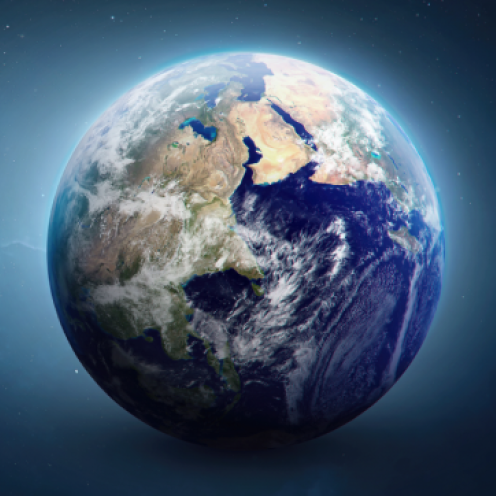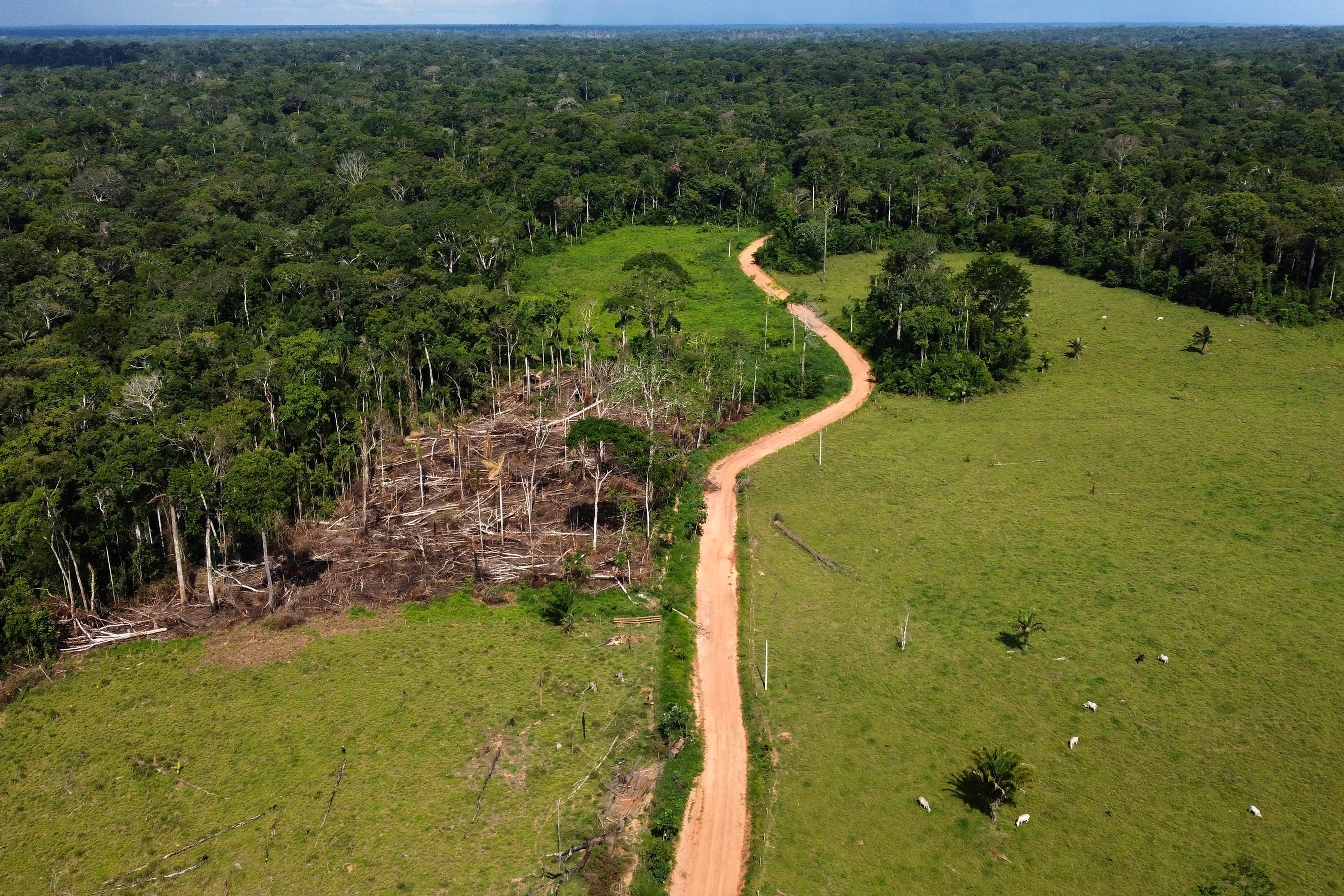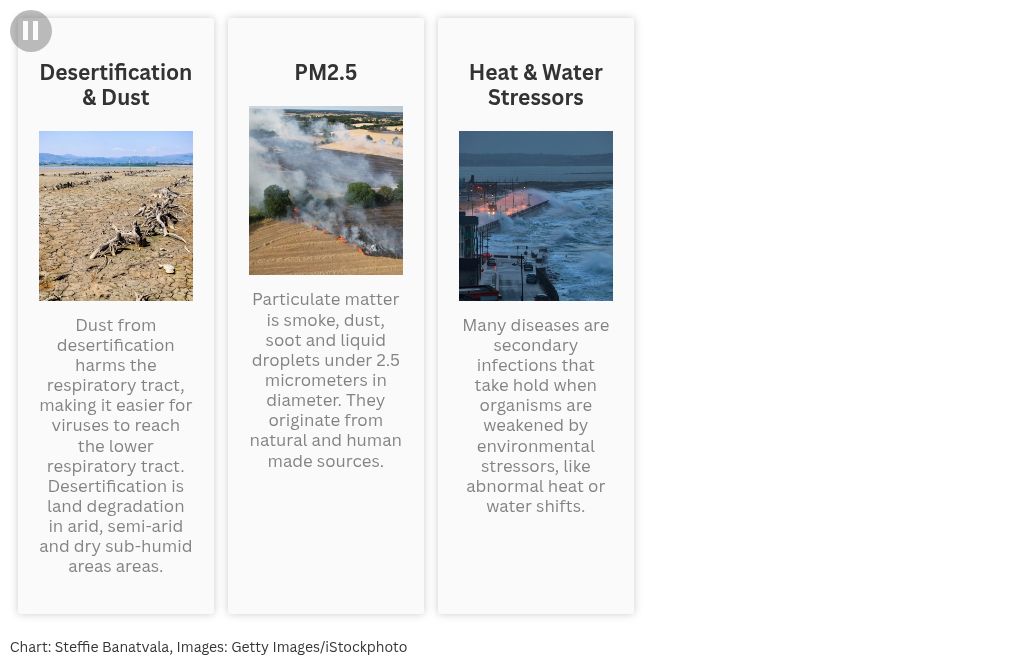Our Terms & Conditions | Our Privacy Policy
Why scientists fear climate change could help Covid to thrive
Sign up to the Independent Climate email for the latest advice on saving the planet
Get our free Climate email
Get our free Climate email

From Indigenous communities in the Amazon to the frozen continent of Antarctica, the Covid-19 virus has spread at an unprecedented pace to some of the world’s most remote areas after it was first reported in Wuhan in December 2019.
To date, more than 778 million cases across 240 countries have been reported by the World Health Organisation, with new variants continuing to emerge.
While globalisation and international transport are well-known drivers of the rapid spread of the virus, emerging research suggests climate change can influence Covid-19 transmission, mutation, and human susceptibility to infection.
Researchers believe that increased exposure to animals, that can carry viruses and transmit them to humans, may lead to a rise in cases.
“As we disturb natural ecosystems and bring wildlife, especially bats in the case of Covid, into closer contact with other animals and people, the risk of diseases jumping between species increases,” Dr Efstathios Giotis, Infectious Disease Research Fellow at Imperial College London, told The Independent.
“In fact, there is growing evidence that SARS-CoV-2 may have first jumped from bats to an intermediate animal, such as raccoon dogs, before eventually infecting humans.”

After initial debate, there is now broad scientific consensus that bats were the so-called reservoir, where Covid pathogens existed and multiplied.
Changing weather patterns and ecosystems have increased human contact with wildlife and created conditions conducive to viral survival.
Extreme weather events further exacerbate exposure, susceptibility, and strain emergency responses.
As noted by experts in The Lancet Planetary Health, the emergence of Covid-19 coincided with one of the hottest years on record, marked by notable climatic extremes.
Record-breaking heat, rising sea levels, melting ice, and extreme weather reinforced evidence that the Earth is undergoing dangerous change for key climate indicators, according to the latest State of the Global Climate report.
Last year was the first in which the average global temperature exceeded 1.5 °C above pre-industrial levels, with extreme weather events leading to the highest number of new displacements since 2008, the report said.

open image in gallery
File image: Last year extreme weather events led to the highest number of new displacements since 2008 (AFP via Getty Images)
Transmission
Covid-19 is transmitted through tiny airborne droplets when an infected person breathes, speaks, sneezes or coughs.
Rising temperatures and relative humidity help infectious particles survive longer and remain suspended in the air, influencing transmission, scientists explained in a paper published in Frontiers in Medicine.
Increased rainfall, flooding, and climate-driven displacement forces people into close contact, boosting infection chances and contributing to higher prevalence in areas with high population density. Displacement also makes hygiene practices harder to maintain, the UNHCR emphasised.
More widely, deforestation increases the risk of transmission for zoonotic diseases, passed from animal to human, and potentially new coronaviruses.
“The big issue of novel zoonotic disease is how we have eroded ecosystems and their natural regulation of disease transmission,” Dr Mark Everard, Ecosystem Services Professor at the University of the West of England told The Independent.
Habitat loss and expanding roads into less degraded areas reduce the buffer natural habitats create from humans, Dr Everard explained.

open image in gallery
File image: Habitat loss and expanding roads into less degraded areas reduce the buffer natural habitats create from humans (Copyright 2022 The Associated Press. All rights reserved)
Mutation
As habitat and buffer loss increases the chance of coronavirus jumping or ‘spilling’ from animals to humans, it increases the likelihood of mutations occurring.
“Climate doesn’t directly change how fast pathogens mutate, but it can create more chances for mutations to happen,” Dr Efstathios Giotis told The Independent.
“For example, when climate events occur such as unusually warm temperatures or habitat changes (such as a bushfire), they can push animals into closer contact with other species or humans.
“In this way viruses like influenza or coronaviruses have more opportunities to jump or spillover between species.
“Each spillover event increases the chances for new mutations to develop.”

open image in gallery
File: Climate factors can also make people more susceptible to Covid-19 (Copyright 2025 The Associated Press. All rights reserved.)
Susceptibility
Climate factors can also make people more susceptible to Covid-19.
Dust from desertification damages the respiratory tract, giving the virus deeper access and increasing disease severity, research in Frontiers in Medicine explained.
In the case of wildfires, tiny particulate matter, known as PM2.5, in smoke irritate and inflame the lungs, increasing the risk of infection. Measuring just 2.5 micrometers in diameter, PM2.5 enters the blood stream and lodges deep in organs.

This risk increases for children, with small lungs, or people with pre-existing organ conditions, research in the The Lancet Planetary explained.
“Organisms stressed by heat, water, etc. have lower resistance to infections,” added Dr Everard, referring to plants, animals or humans who either carry infections or are infected.
Emergency responses
Climate hazards can interfere in the delivery of public services and staff mobilisation, research in The Lancet added.
For example, power disruptions can affect health facilities and wildfires divert emergency staff attention.
Contract tracing also becomes harder as, for example, people move and intermingle in response to flooding.
While research into the links between climate and Covid-19 is still ongoing and some studies are inconclusive, the experts warned: “Multiple risks can all affect health systems, leading to negative outcomes for people and locations with low capacities to respond to Covid-19.”
Images are for reference only.Images and contents gathered automatic from google or 3rd party sources.All rights on the images and contents are with their legal original owners.



Comments are closed.